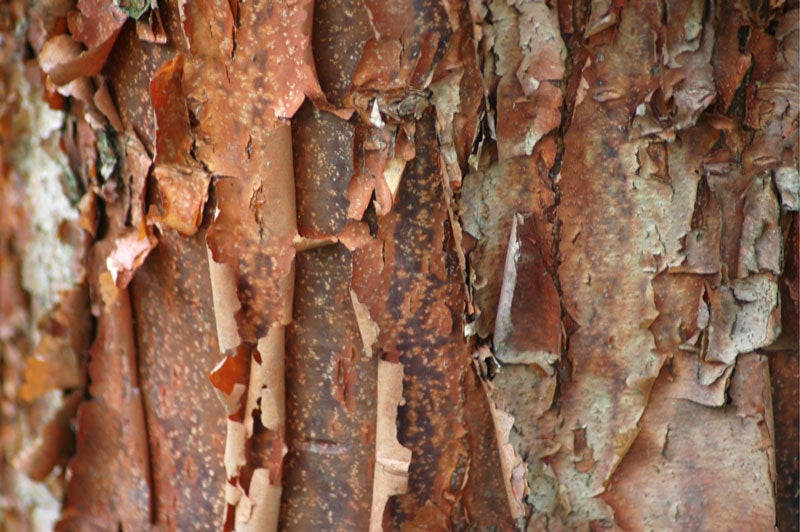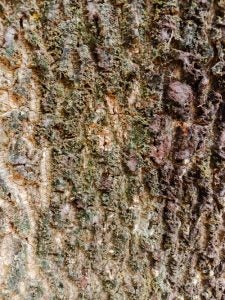Tree bark is as revealing as the leaves, fruit
Published 9:30 am Friday, November 1, 2019

- Bark on the trunk and limbs of paperback maple (Acer griseum) is extremely ornamental because it peels into large curls. These curls remain on the tree rather than falling to the ground like a sycamore’s bark tends to do. -- Courtesy Shutterstock

The gray bark of the hackberry tree (Celtis occidentalis) develops over time a warty texture with corky, dark ridges. — Courtesy Shutterstock
By Kristi Hendricks
Trees with interesting bark unveil their most engaging feature as autumn arrives. Those with handsome trunk attire have the natural ability to provide another two seasons of spectator enjoyment when flowers and foliage have long departed. Let’s take a closer look at three such lovely trees, two native and one imported.
American persimmon (Diospyros virginiana) is a Virginia fruit tree that thrives in moist, sandy soil. This medium-sized tree sports attractive deep green foliage, yet the outer covering of its woody parts is the real eye-catcher. The dark bark has a noticeable blocky pattern commonly referred to as alligator wood. Because of its hardness, persimmon wood is used for golf club heads and shoe lasts.
Female persimmon trees need a male pollinator tree nearby to set fruit. Female blossoms appear solitary with fragrant, greenish flowers in late spring. The small, edible fruits form in late summer and ripen in autumn. The persimmon fruit is very bitter when green, but ripens to a tasty orange-purple treat beloved by the raccoon and white-tailed deer.
The gray bark of the hackberry tree (Celtis occidentalis) develops over time a warty texture with corky, dark ridges. Earlier female flowers are transitioning now into an abundant fruit crop of fleshy, berry-like drupes of deep purple sweetness when ripe. Each drupe contains one round brown seed. The fruits are attractive to a variety of wildlife species that consume the drupes and disperse the seeds.
This tough, medium-sized shade tree has excellent wildlife value. Many species of song and game birds and small mammals seek out the sweet fruit. Several butterfly species use the native hackberry as a caterpillar host plant. Hackberries are also edible for humans and used in jellies and wine production. The somewhat weak wood, susceptible to wind and ice damage, is primarily used for firewood. Site the hackberry in naturalistic locations where seeds can fall randomly.
Native to central China, the paperbark maple (Acer griseum) makes for a stunning specimen tree. While its autumn leaf color is lovely, the bark is legendary for providing winter interest. Bark on the trunk and limbs is extremely ornamental because it peels into large curls. These curls remain on the tree rather than falling to the ground like a sycamore’s bark tends to do. As this bark peels, it reveals contrasting inner bark of tan to rose-brown color.
The low maintenance paperbark is worthy of locations where its ornamental features can be appreciated. This tree can also serve as an understory tree in a woodland garden of more statuesque maple species like the red, sugar or silver.
An easy-to-use checklist of trees commonly found in Virginia and their traditional uses is found online at pubs.ext.vt.edu.





